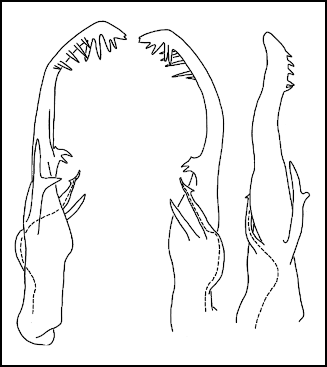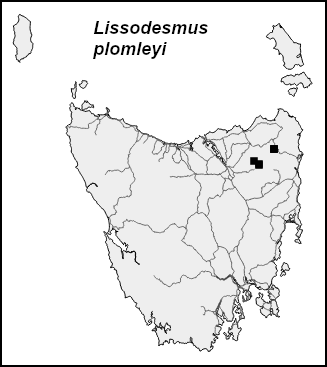Polydesmida: Dalodesmidae: Lissodesmus

Lissodesmus adrianae Jeekel, 1984
Lissodesmus is the principal genus in the "Lissodesmus group" (Dasytigma, Lissodesmus, Tasmanopeltis). It is also the dominant genus of larger dalodesmids in Tasmania (20 species) and in the wetter parts of central and western Victoria (11 species). All the described Tasmanian Lissodesmus species are endemic, and there may be narrow-range species still uncollected.
Lissodesmus species are shallow-burrowing millipedes that live mainly in well-rotted leaf litter and well-rotted logs. A few species live in "extreme" habitats: L. montanus wanders over mountaintop boulder fields, L. orarius can be found with crabs under driftwood at the high tide line, and L. piscator has not yet been collected above ground (only pitfall-trapped). Within their respective ranges, Lissodesmus species occur in pine and eucalypt plantations and in regrowth forest arising from clearfell-and-burn silviculture.
Many of the Lissodesmus species ranges overlap, but some ranges end abruptly at major biogeographical divides, like the East Tamar Break (L. adrianae, L. alisonae). I have not found very tight parapatry between Lissodesmus species, as occurs in Gasterogramma and Tasmaniosoma.
Lissodesmus adrianae Jeekel, 1984
Males ca 18 mm long, chestnut brown (see image above), paranota slightly reduced. Defensive secretion contains benzaldehyde. Common in all forest types in the wetter parts of the northeast. Right gonopod shown below in medial (left) and anterior (right) views.
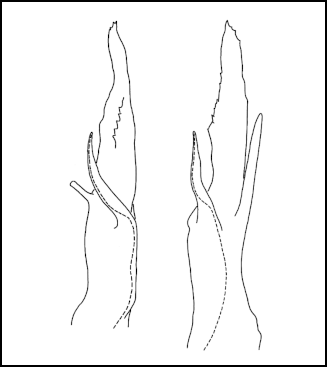
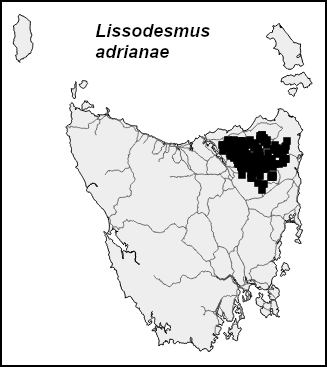
Lissodesmus alisonae Jeekel, 1984
Males ca 18 mm long, pale brown with reddish ring margins, paranota reduced, rear corners turned up. Common in all forest types in north central Tasmania. The first three drawings show the right gonopod in medial (left), anterior (centre) and lateral (right) views. The fourth drawing shows a common variant in lateral view.
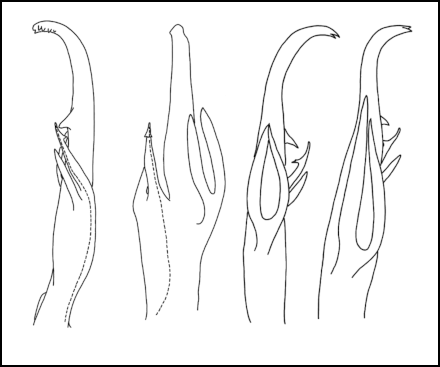

Lissodesmus anas Mesibov, 2006
Males ca 16 mm long, very pale brown, paranota reduced, rear corners strongly turned up. Uncommon in forest and coastal heathland in the northwest. The anterior spiracle on each diplosegment looks "hairy" (left-hand image), but the "hair" actually arises from a fold of the integument above the anterior spiracle (right-hand image, leg removed, ventrolateral view). Right gonopod shown below in medial (left) and anterior (right) views.
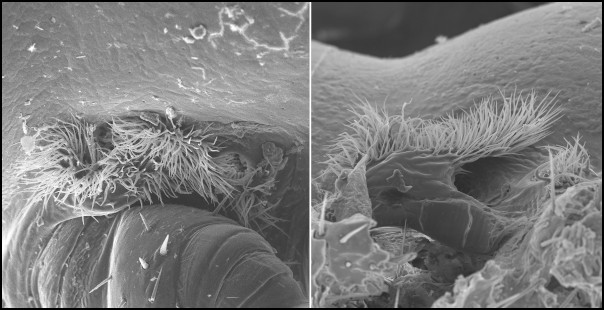


Lissodesmus bashfordi Mesibov, 2006
Males ca 15 mm long, very pale brown with reddish ring margins, paranota wide. Uncommon in wet eucalypt forest in the south and southeast. Right gonopod shown below in medial (left) and anterior (right) views.
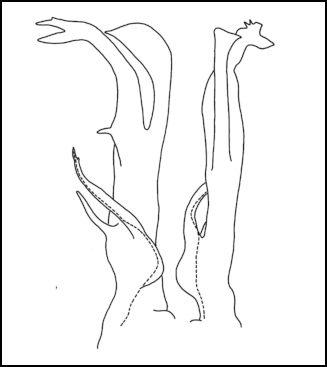
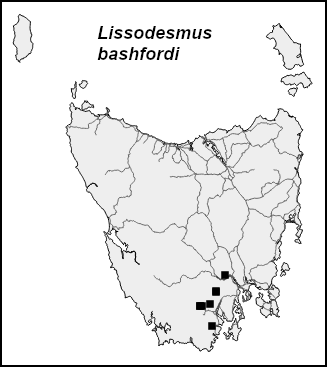
Lissodesmus clivulus Mesibov, 2006
Males ca 17 mm long, light brown, paranota somewhat reduced. Common in coastal heathland, coastal woodland and tea-tree forest on the northern West Coast. Right gonopod shown below in medial (left) and anterior (right) views.
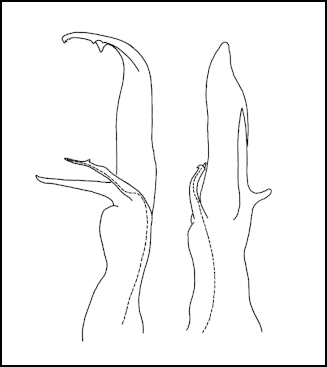
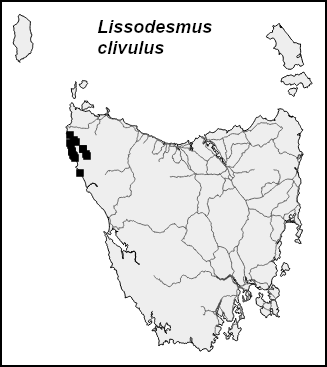
Lissodesmus cognatus Mesibov, 2006
Males ca 14 mm long, off-white to very pale brown, paranota reduced, rear corners turned up. Uncommon in dry and wet eucalypt forest in two disjunct areas in the northeast. The first three drawings show the right gonopod in medial (left), anterior (centre) and lateral (right) views. The fourth drawing is a lateral view of the right gonopod in the disjunct eastern population.
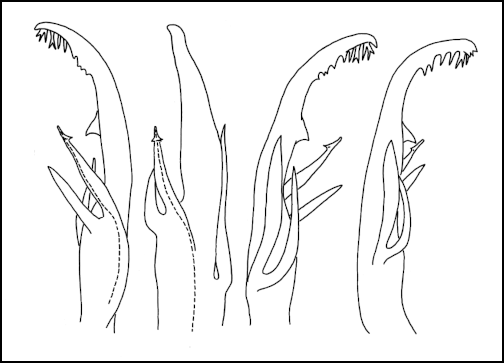
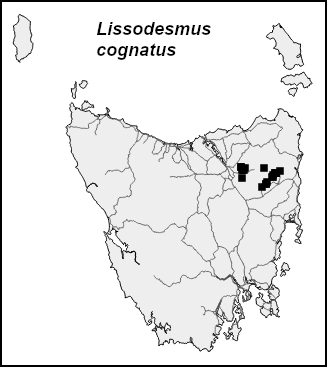
Lissodesmus cornutus Mesibov, 2006
Males ca 17 mm long, off-white, paranota reduced, rear corners massive, curved upwards. Fairly common in wet eucalypt forest and rainforest in the southwest. Right gonopod shown below in medial (left) and anterior (right) views.
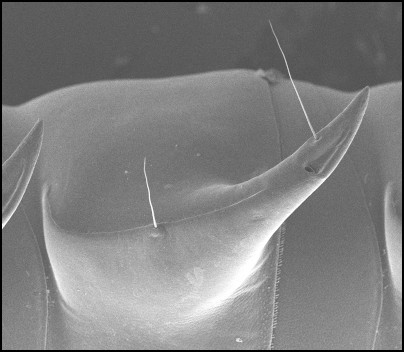
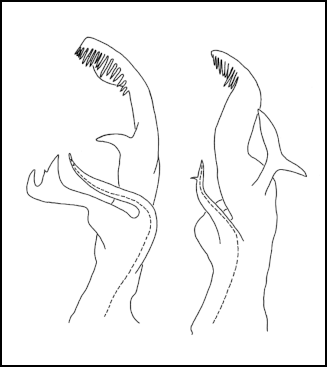

Lissodesmus devexus Mesibov, 2006
Males ca 12 mm long, pale brown, paranota reduced, rear corners turned up. Locally abundant in wet eucalypt forest and rainforest in the northeast, and in wet eucalypt forest in an apparently disjunct patch in the central north (see map). Medial views of right gonopod show the range of variation in structure.

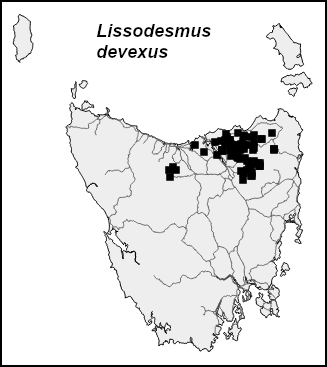
Lissodesmus hamatus Mesibov, 2006
Males 15-20 mm long (smaller in drier habitats), pale brown with light red speckling, paranota reduced, rear corners turned up. Common in dry and wet eucalypt forest in eastern Tasmania. Right gonopod shown above in medial (left) and anterior (right) views.
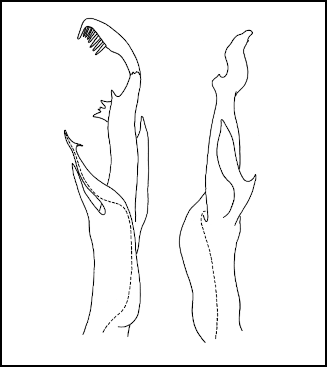
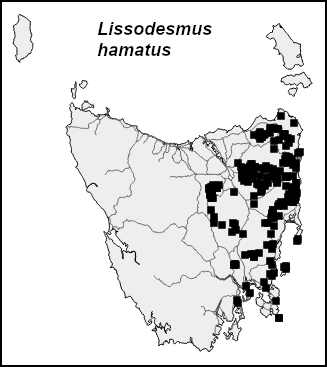
Lissodesmus horridomontis Mesibov, 2006
Males ca 13 mm long, off-white, paranota reduced, rear corners slightly turned up. Locally abundant in wet eucalypt forest and rainforest in a small part of the northeast. Right gonopod shown below in medial (left) and anterior (right) views.
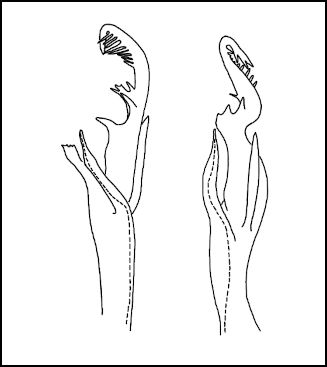
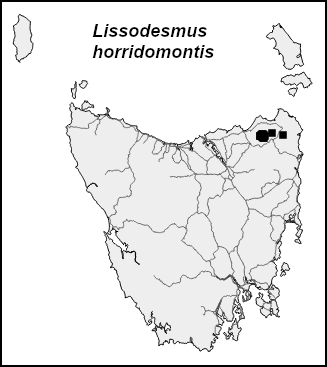
Lissodesmus inopinatus Mesibov, 2006
Males ca 17 mm long, pale brown with light red patches, paranota reduced, rear corners turned up. Uncommon in dry and wet eucalypt forest in the Eastern Tiers. Right gonopod shown below in medial (left) and anterior (right) views.

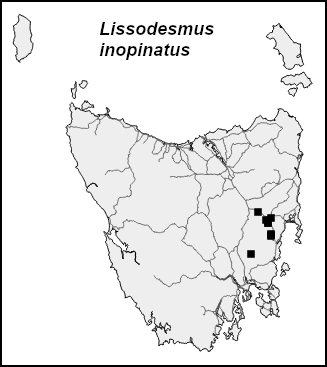
Lissodesmus latus Mesibov, 2006
Males ca 20 mm long, paranota very wide; uniformly pale to chestnut brown near the coast, off-white with transverse purple banding inland. Fairly common in forest and scrub habitats in the northwest and west. Right gonopod shown below in medial (left) and anterior (right) views.
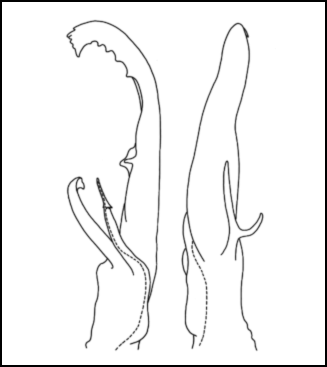
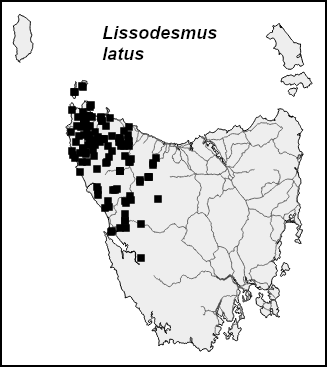
Lissodesmus modestus Chamberlin, 1920
Males ca 16 mm long, pale brown with red speckling, paranota wide, rear corners slightly turned out. Variably common in wet eucalypt forest and rainforest in the south and southeast. Right gonopod shown below in medial view.
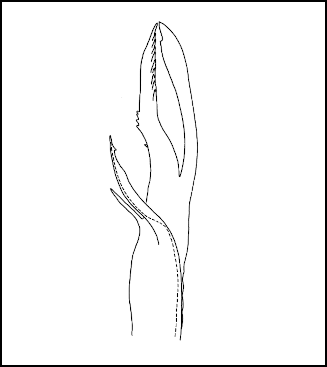

Lissodesmus montanus Mesibov, 2006
Males ca 25 mm long, light reddish-brown, paranota wide. Uncommon species in the central west. Right gonopod shown below in medial view.

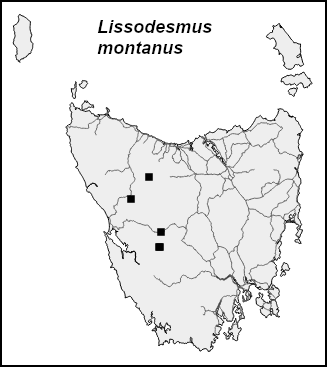
Lissodesmus nivalis Mesibov, 2018
Males ca 25 mm long, light brown, paranota wide. Only known from the Ben Lomond plateau at ca 1500 m elevation.
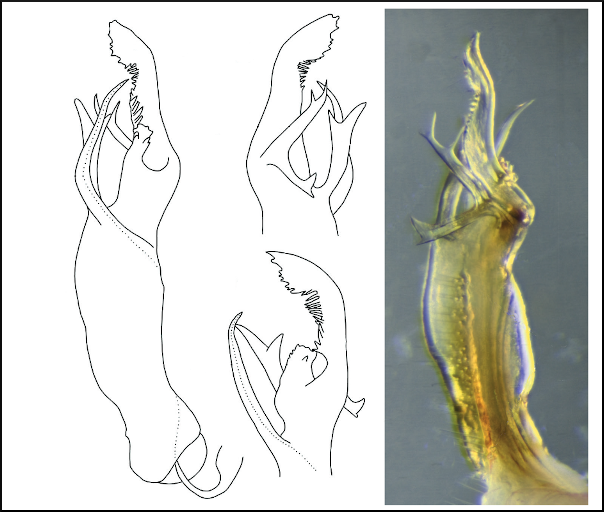
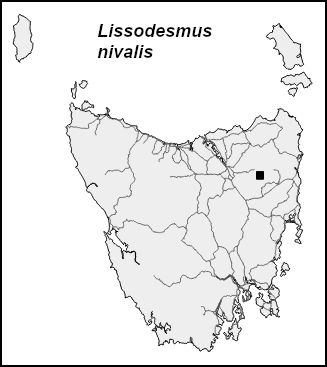
Lissodesmus orarius Mesibov, 2006
Males ca 17 mm long, uniformly light brown, paranota somewhat reduced. Mainly in coastal habitats (down to the high tide line) between the Pedder and Pieman Rivers on the northern part of the West Coast, where it is locally abundant. Right gonopod shown below in medial (left) and anterior (right) views.
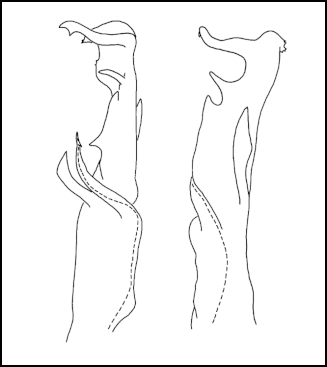
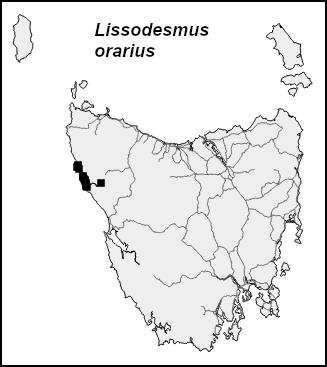
Lissodesmus peninsulensis Mesibov, 2006
Males ca 16 mm long, light brown, paranota wide. Uncommon in wet eucalypt forest on Tasman and Forestier Peninsulas. Right gonopod shown below in medial (left) and anterior (right) views.


Lissodesmus perporosus Jeekel, 1984
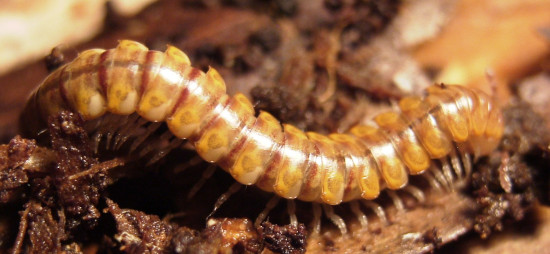
Males ca 18 mm long, light brown with reddish-purple transverse banding, paranota wide. Males and females have unusual ozopore formula 5, 7, 9-19. Defensive secretion contains o-cresol. Common in all forest and scrub habitats in the Northwest. Right gonopod shown below in medial (left) and anterior (right) views.
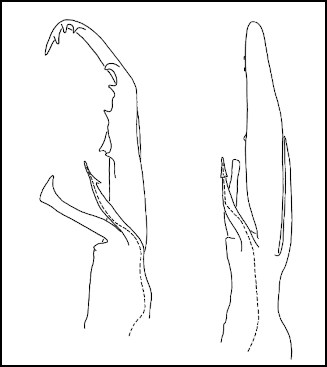
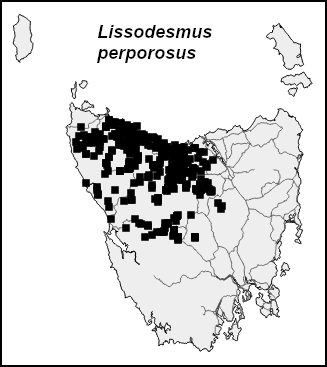
Lissodesmus piscator Mesibov, 2019
Known only from pitfall traps set on a treeless part of Ritters Plain near Lake Mackenzie, at 1080 m elevation. Suspected to be an "underground" species in boulder voids. Males and females pale, males ca 15 mm long, paranota reduced. Drawing shows right gonopod in (left to right) medial, anterior, lateral and posterior views.
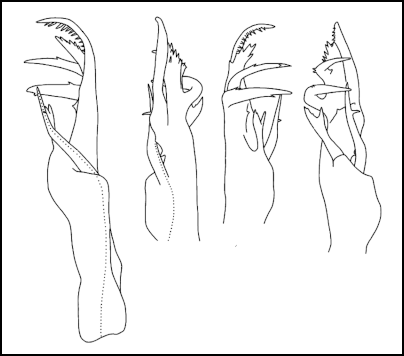

Lissodesmus plomleyi Mesibov, 2006
Males ca 11 mm long, pale brown, paranota reduced. Rare in northeast. Right gonopod shown below in lateral (left), medial (center) and anterior (right) views.
